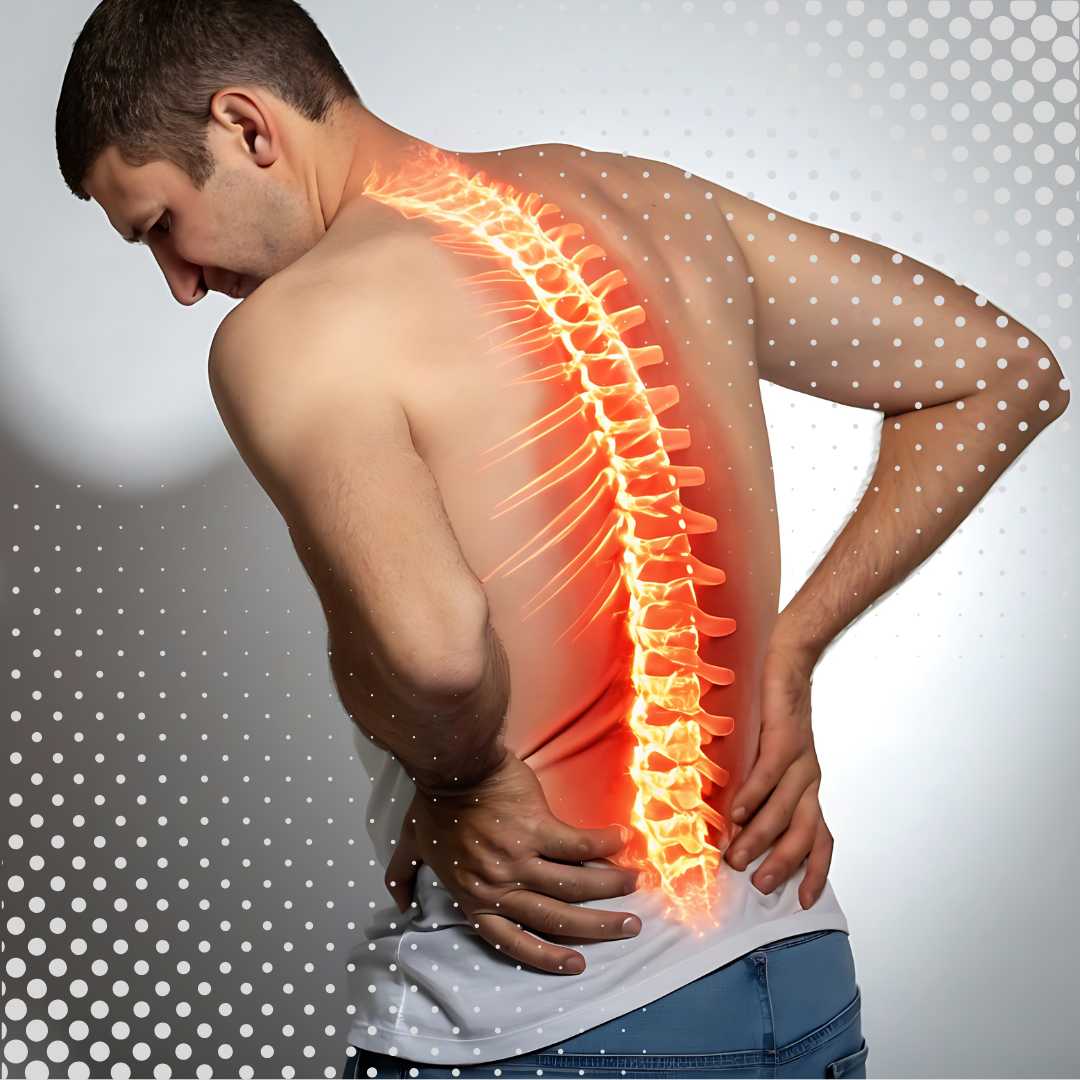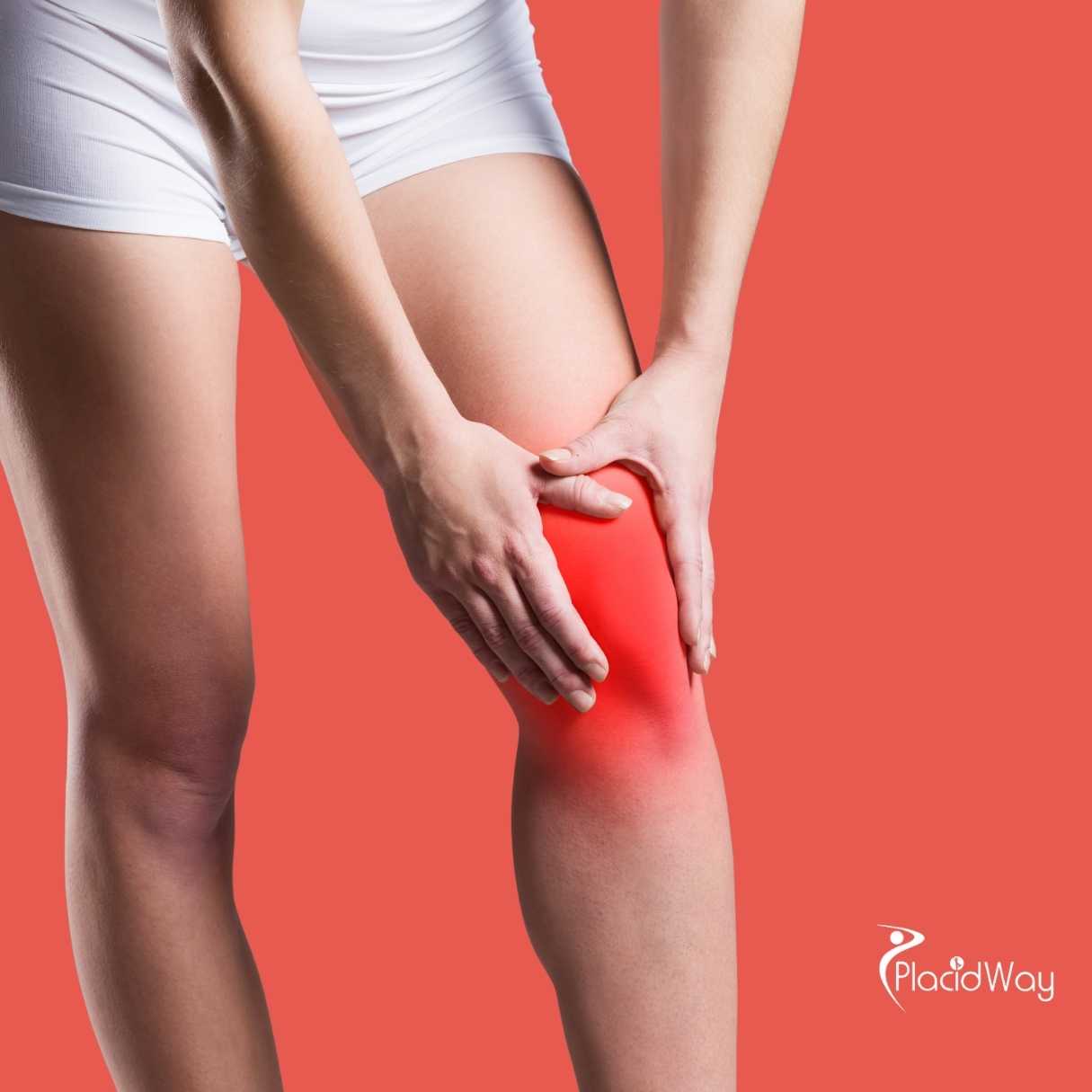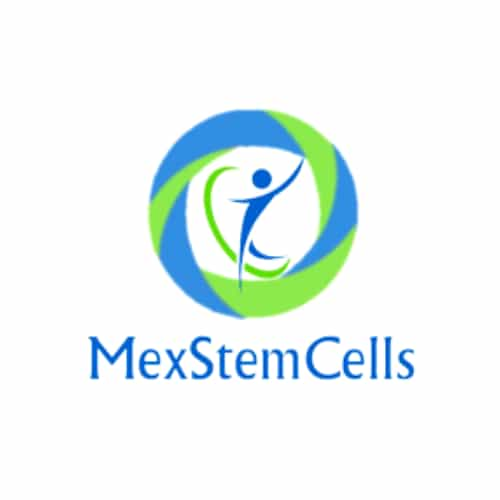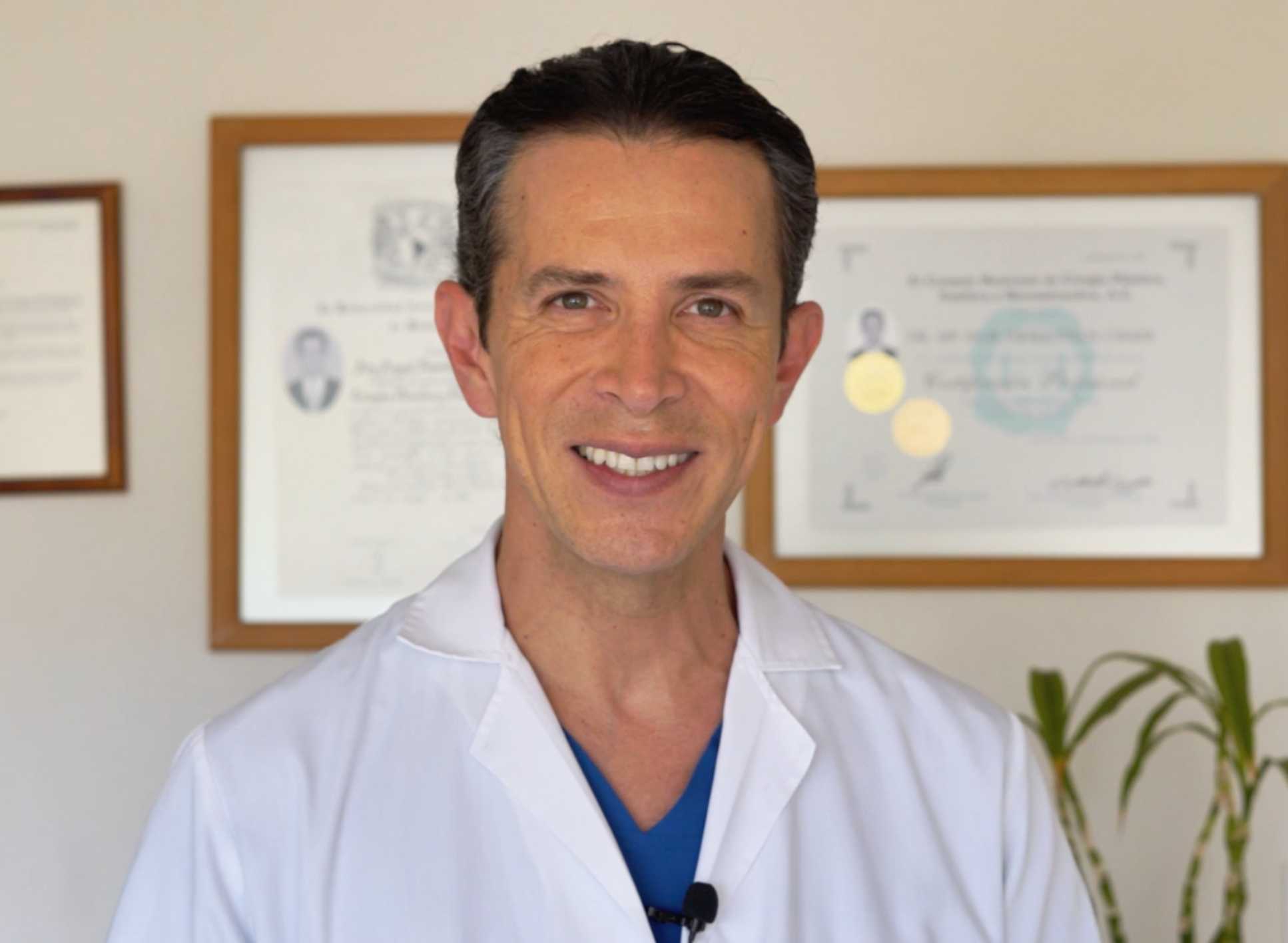Why Stem Cell Therapy for Arthritis in Mexico Is a Popular Choice for Canadians
.png)
Osteoarthritis, a debilitating condition characterized by the breakdown of cartilage in joints, affects millions worldwide, including many Canadians. While conventional treatments in Canada often focus on managing symptoms through medication, physical therapy, or joint replacement surgeries, many patients are exploring alternative, regenerative therapies. Among these, stem cell therapy has emerged as a promising option, offering the potential to repair damaged tissues and reduce inflammation. However, accessing stem cell therapy for osteoarthritis in Canada can be challenging due to stringent regulations, limited availability, and high out-of-pocket costs. This has led a growing number of Canadians to look beyond their borders, with Mexico becoming a popular destination for those seeking innovative and more affordable solutions for their osteoarthritis.
Mexico has gained a reputation as a leading medical tourism hub, attracting patients from North America and beyond. The country's more flexible regulatory environment for stem cell treatments, combined with state-of-the-art facilities and experienced medical professionals, makes it an attractive choice. For Canadians, the appeal extends to significantly shorter wait times and considerable cost savings compared to what they might encounter at home. This detailed guide will help Canadians understand how they can access stem cell therapy for osteoarthritis in Mexico, covering everything from what the therapy entails to how to choose a reputable clinic and prepare for their medical journey.
What is stem cell therapy for osteoarthritis?
Stem cell therapy is a regenerative medical approach that harnesses the body's natural healing capabilities. In the context of osteoarthritis, this involves introducing stem cells into the affected joint. These remarkable cells possess the ability to self-renew and differentiate into various cell types, including cartilage cells (chondrocytes). The goal is to repair or regenerate damaged cartilage, reduce inflammation, and mitigate pain, ultimately improving joint function and mobility.
There are different types of stem cells used in therapy, including mesenchymal stem cells (MSCs) which are commonly derived from the patient's own bone marrow or adipose (fat) tissue, or from donated umbilical cord tissue. Once injected into the arthritic joint, these stem cells are believed to release anti-inflammatory factors and growth factors that can help to modulate the immune response, lessen pain, and potentially stimulate the body's own repair mechanisms for damaged tissues.
Why are Canadians seeking stem cell therapy for osteoarthritis in Mexico?
Several compelling reasons drive Canadians to consider Mexico for stem cell therapy for osteoarthritis. In Canada, access to stem cell therapy for osteoarthritis is often limited to research studies, and it is generally not covered by provincial healthcare plans. This means patients face long wait times for conventional treatments and substantial out-of-pocket expenses for any private stem cell treatments that might be available.
In contrast, Mexico has a more flexible regulatory framework that allows clinics to offer stem cell treatments more readily. This means patients can often access treatment much faster, without the prolonged waiting lists common in the Canadian public healthcare system. Moreover, the cost of stem cell therapy in Mexico is often a fraction of what it would be in Canada, making it a financially viable option for many individuals who might otherwise be unable to afford the treatment.
What is the cost of stem cell therapy for osteoarthritis in Mexico?
The cost of stem cell therapy for osteoarthritis in Mexico is a significant draw for many Canadians. While prices can vary based on several factors, they are generally much lower than in Canada or the United States. Factors influencing the total cost include the type and quantity of stem cells used, the number of joints being treated, the specific clinic's reputation, and whether complementary therapies (like Platelet-Rich Plasma or PRP) are included.
Here's a general breakdown of typical costs as of mid-2025:
- Single Joint (Lower Dose/Basic Protocol): Treatments for one joint with a defined number of stem cells (e.g., 20-40 million Mesenchymal Stem Cells) might range from $2,950 to $4,500 USD. These often involve direct injection into the joint.
- Two Joints or Higher Dose: For treating two joints, or administering a higher cell count (e.g., 50-75 million MSCs per joint or combined with IV administration), the cost could be in the range of $4,500 to $7,000 USD.
- Comprehensive Protocols/Additional Therapies: The higher end of the spectrum, around $7,000 to $8,500 USD, may include a very high number of stem cells (e.g., 100 million or more), a combination of cell types, or may integrate supportive therapies like PRP, exosomes, or hyperbaric oxygen therapy.
It's important to request a detailed, itemized quote from any clinic you consider to fully understand what is included in the quoted price. This transparency is crucial for budgeting your medical journey.
Are stem cell treatments in Mexico regulated and safe?
This is a common and important question for anyone considering medical treatment abroad. In Mexico, stem cell therapy is indeed legal, and the country has developed a regulatory framework to ensure the safety and efficacy of these treatments. The primary regulatory body is COFEPRIS (Federal Commission for Protection Against Sanitary Risks), which is akin to the FDA in the United States. COFEPRIS oversees medical procedures and treatments, including stem cell therapies, to ensure compliance with rigorous health and safety standards.
Reputable clinics offering stem cell therapy in Mexico will hold proper licenses from COFEPRIS, including specific licenses for stem cell collection, surgery rooms (if applicable for autologous procedures), stem cell banking (for processing and cryopreservation), and regenerative medicine. Patients should always verify a clinic's licensing and accreditations to ensure they are choosing a legitimate and safe provider. Many clinics also seek international accreditations, further demonstrating their commitment to high standards of care.
How long does a typical stem cell therapy procedure for osteoarthritis take in Mexico?
The duration of a stem cell therapy procedure for osteoarthritis can vary depending on the specific protocol and the type of stem cells used. Generally, the actual injection procedure is relatively quick, often taking less than an hour. However, the overall treatment plan usually involves a few days in Mexico to accommodate initial consultations, diagnostic tests, the cell preparation process (if using autologous cells), the procedure itself, and immediate post-treatment monitoring.
For example, if using autologous stem cells (from your own body), there will be an initial appointment for cell collection (e.g., bone marrow aspiration or adipose tissue liposuction), followed by laboratory processing, and then a separate appointment for the injection. If using allogeneic (donor) cells, the process might be more streamlined, involving consultation, assessment, and then the injection. Many clinics offer packages that include a few nights of hotel accommodation to facilitate the treatment process and allow for initial recovery before travel.
What types of stem cells are used for osteoarthritis treatment in Mexico?
Mexican clinics utilize various types of stem cells for osteoarthritis treatment, each with its own advantages. The most commonly used are Mesenchymal Stem Cells (MSCs). These cells are multipotent, meaning they can differentiate into a variety of cell types, including cartilage, bone, and fat cells, and they also possess immunomodulatory and anti-inflammatory properties.
- Umbilical Cord-Derived MSCs: These are allogeneic (donor) cells sourced from the umbilical cords of healthy, screened donors after birth. They are considered "younger" cells with high proliferative capacity and are readily available, eliminating the need for a harvesting procedure from the patient.
- Adipose-Derived MSCs (AD-MSCs): These are autologous (from the patient's own body) stem cells obtained from fat tissue, typically through a mini-liposuction procedure. Adipose tissue is an abundant source of MSCs, and the collection process is minimally invasive.
- Bone Marrow-Derived MSCs (BM-MSCs): Also autologous, these are harvested from the patient's bone marrow, usually from the hip bone. While effective, the collection process can be more uncomfortable than adipose tissue collection.
- Pluripotent Stem Cells: Some advanced clinics in Mexico may also offer treatments involving pluripotent stem cells, which have a broader regenerative potential. These are often still considered experimental in many countries but may be available in Mexico under certain protocols.
The choice of stem cell type often depends on the patient's specific condition, the clinic's expertise, and the available protocols.
What should Canadians consider when choosing a stem cell clinic in Mexico?
Selecting the right clinic for stem cell therapy for osteoarthritis in Mexico is crucial for a safe and effective experience. Canadians should consider the following factors:
- Accreditation and Licensing: Verify that the clinic is fully licensed by COFEPRIS (the Mexican health authority) and, if possible, holds international accreditations. This ensures they meet established safety and quality standards.
- Physician Qualifications and Experience: Research the doctors' credentials, experience in regenerative medicine, and specific expertise in treating osteoarthritis with stem cells. Look for board-certified specialists.
- Type of Stem Cells and Protocols: Understand what type of stem cells they use (autologous, allogeneic, specific sources like umbilical cord or adipose tissue) and their treatment protocols. Inquire about cell viability and quantity.
- Transparency in Pricing: Request a detailed, itemized quote that clearly outlines all costs, including consultations, procedures, cells, and any post-treatment care or included amenities (like accommodation or transport).
- Patient Testimonials and Reviews: Look for reviews and testimonials from other Canadian or international patients who have undergone stem cell therapy for osteoarthritis at the clinic. Independent review platforms can be helpful.
- Communication and Support: Assess the clinic's responsiveness and willingness to answer all your questions. A good clinic will have a dedicated patient coordinator who can assist with travel arrangements, appointments, and any concerns.
- Pre- and Post-Treatment Care: Understand the clinic's process for patient evaluation, pre-treatment instructions, and follow-up care. Comprehensive support before, during, and after the procedure is important.
What is the typical process for a Canadian undergoing stem cell therapy in Mexico?
The process for a Canadian seeking stem cell therapy for osteoarthritis in Mexico generally follows these steps:
- Initial Consultation and Medical Review:
- Contact a few reputable clinics in Mexico, often through their websites or medical tourism facilitators like PlacidWay.
- Provide your medical history, diagnostic reports (X-rays, MRIs), and a summary of your osteoarthritis symptoms.
- Most clinics offer a free initial phone or video consultation with a medical specialist to assess your eligibility and discuss potential treatment plans.
- Treatment Plan and Quote:
- If you are deemed a candidate, the clinic will develop a personalized stem cell therapy plan, outlining the type of cells, number of injections, and estimated duration.
- You will receive a detailed cost estimate, typically including the procedure, medical fees, and sometimes accommodation and local transportation.
- Travel Arrangements:
- Once you accept the treatment plan and quote, you will coordinate travel dates with the clinic.
- Book flights to a convenient Mexican city (e.g., Tijuana, Cancun, Mexico City), considering direct flights from major Canadian cities.
- Ensure your passport is valid and check any specific entry requirements for Canadians.
- Arrival and Pre-Treatment Assessment:
- Upon arrival in Mexico, you will typically be met by a clinic representative or concierge.
- You'll undergo further in-person medical evaluations, blood tests, and imaging to confirm your eligibility and finalize the treatment plan.
- Stem Cell Procedure:
- Depending on the protocol, the stem cells will either be harvested from your body (if autologous) or prepared from donor sources.
- The stem cells will be injected directly into the affected joint(s), often guided by ultrasound or fluoroscopy for precision.
- The procedure is typically minimally invasive and performed on an outpatient basis.
- Post-Treatment Monitoring and Recovery:
- You will receive post-treatment instructions and typically have a brief period of monitoring at the clinic or your accommodation.
- The clinic will usually schedule follow-up appointments or provide remote support for your recovery back in Canada.
What are the potential benefits of stem cell therapy for osteoarthritis?
Stem cell therapy for osteoarthritis offers several potential benefits that make it an attractive option for many patients:
- Pain Reduction: Stem cells have anti-inflammatory properties that can significantly reduce pain associated with osteoarthritis, often leading to a decreased reliance on pain medication.
- Improved Mobility and Function: By reducing inflammation and potentially aiding in tissue repair, stem cell therapy can enhance joint flexibility, range of motion, and overall physical function. Patients often report being able to engage in activities they previously found difficult or impossible.
- Cartilage Regeneration: While research is ongoing, stem cells have the potential to stimulate the body's own repair mechanisms and differentiate into chondrocytes, which are essential for forming new cartilage tissue. This could potentially slow down or even reverse some of the degenerative effects of osteoarthritis.
- Minimally Invasive: Compared to surgical interventions like joint replacement, stem cell therapy is a minimally invasive procedure, typically involving injections. This means less downtime, lower risks of surgical complications, and a faster recovery period.
- Natural Healing: The therapy utilizes the body's own regenerative capabilities or carefully sourced donor cells, promoting a more natural healing process.
What are the potential risks and side effects of stem cell therapy?
While generally considered safe, like any medical procedure, stem cell therapy carries some potential risks and side effects. At reputable clinics adhering to strict safety protocols, these risks are minimized but should still be understood:
- Infection: As with any injection, there's a small risk of infection at the injection site. This risk is greatly reduced by sterile techniques.
- Pain or Swelling: Patients may experience temporary localized pain, swelling, or bruising at the injection site or where cells were harvested (if autologous).
- Allergic Reaction: While rare, an allergic reaction to donor cells or components used in the preparation process is a possibility. Reputable clinics perform thorough screening of donor cells to minimize this.
- Implant Failure: In some cases, the stem cells may not achieve the desired therapeutic effect, or the results may not be as significant as hoped.
- Tumor Formation: This is a theoretical risk, particularly with certain types of pluripotent stem cells, but it is extremely rare with the mesenchymal stem cells typically used for osteoarthritis and when treatments are performed in regulated environments.
- Complications from Anesthesia: If cell harvesting requires local anesthesia or sedation, there are inherent risks associated with these.
It's vital to have a thorough discussion with the medical team about all potential risks and to ensure the clinic has protocols in place to manage any complications.
How do Canadian provincial health plans cover stem cell therapy in Mexico?
Canadian provincial health plans, such as OHIP in Ontario or MSP in British Columbia, generally do not cover stem cell therapy for osteoarthritis performed in Mexico or any other country. This is because stem cell therapy for osteoarthritis is largely considered experimental or is not an approved, publicly funded treatment within Canada's healthcare system. Therefore, Canadians seeking this treatment abroad should be prepared to pay for all costs out-of-pocket.
It is advisable to check with your private travel insurance provider to see if they offer any coverage for medical treatments abroad, although it's unlikely they will cover experimental therapies. Some patients may also explore medical loans or other financing options to cover the costs. Understanding that this will be a self-funded endeavor is a crucial part of the planning process for Canadians.
Do Canadians need a visa to travel to Mexico for medical treatment?
For most Canadians, a specific medical visa is not required to travel to Mexico for stem cell therapy for osteoarthritis or other medical treatments, provided the stay is for tourism or medical tourism purposes and does not exceed 180 days. Canadians only need a valid passport to enter Mexico.
Upon arrival, you will typically be provided with a Multiple Migratory Form (FMM) by the airline or at the port of entry. This form needs to be properly completed and kept safe, as it serves as your tourist card and will be required upon your departure. It is always a good idea to check the latest travel advisories and entry requirements on the official Government of Canada website before planning your trip, as regulations can change.
What is the recovery period like after stem cell therapy for osteoarthritis?
One of the advantages of stem cell therapy for osteoarthritis is its generally short and manageable recovery period compared to invasive surgeries. Immediately after the procedure, patients may experience some mild soreness, swelling, or bruising at the injection site. This typically subsides within a few days.
Patients are usually advised to rest the treated joint for a short period and avoid strenuous activities for a few weeks to allow the cells to settle and begin their work. Most individuals can resume light daily activities fairly quickly. The full benefits of stem cell therapy are not usually immediate; rather, they unfold gradually over several weeks to months as the stem cells work to reduce inflammation and potentially promote tissue repair. Clinics often provide specific post-treatment guidelines, which may include physical therapy or exercises to optimize results. Follow-up communication with the clinic, even remotely, is often part of the long-term recovery process.
Can stem cell therapy completely cure osteoarthritis?
While stem cell therapy offers significant promise for managing and improving osteoarthritis, it is generally not considered a "complete cure" in the sense that it may not fully reverse all the existing joint damage or stop the disease progression indefinitely. The primary goals of stem cell therapy for osteoarthritis are to:
- Significantly reduce pain and inflammation.
- Improve joint function and mobility.
- Potentially stimulate the regeneration of damaged cartilage and other joint tissues.
- Slow down the further degeneration of the joint.
Many patients experience substantial relief and improvement in their quality of life, allowing them to reduce pain medication and participate in activities they previously couldn't. However, osteoarthritis is a complex, progressive condition, and the long-term effectiveness of stem cell therapy can vary from person to person. It's important to have realistic expectations and discuss the potential outcomes thoroughly with your medical provider in Mexico.
What cities in Mexico are popular for stem cell therapy for osteoarthritis?
Several cities across Mexico have become prominent hubs for medical tourism, including stem cell therapy for osteoarthritis, due to their advanced clinics, experienced doctors, and convenient access for international patients. Some of the most popular destinations include:
- Tijuana: Located just across the U.S. border from San Diego, California, Tijuana is a highly accessible city for many North Americans, including Canadians. It boasts numerous clinics offering stem cell therapy and other regenerative medicine treatments.
- Cancun: A popular tourist destination, Cancun also offers a growing number of reputable clinics, combining medical treatment with the opportunity for a recovery in a resort-like setting.
- Guadalajara: As Mexico's second-largest city, Guadalajara is home to a robust medical infrastructure, including state-of-the-art hospitals and specialized stem cell clinics.
- Mexico City: The capital city provides a wide array of medical facilities and specialists, offering advanced stem cell therapies and a comprehensive healthcare experience.
- Los Algodones: Another border town known for its medical and dental tourism, offering competitive pricing for various treatments, including stem cell therapy.
When choosing a city, consider factors like ease of travel, proximity to an international airport, and the availability of clinics specializing in osteoarthritis treatment.
How can Canadians ensure a smooth medical trip to Mexico for stem cell therapy?
To ensure a smooth and stress-free medical trip to Mexico for stem cell therapy for osteoarthritis, Canadians should take several proactive steps:
- Thorough Research: Invest time in researching and vetting clinics. Look for detailed information on their website, third-party reviews, accreditations, and doctor qualifications.
- Clear Communication: Maintain open and clear communication with the chosen clinic. Ask all your questions, no matter how small, about the treatment, costs, logistics, and what to expect.
- Detailed Itinerary and Documentation: Have a clear itinerary with confirmed appointments, flight details, and accommodation. Carry all necessary medical records and travel documents (passport, FMM).
- Financial Planning: Understand all costs involved, including the treatment, travel, accommodation, and any unforeseen expenses. Have your funds readily accessible, as most clinics require upfront payment.
- Travel Insurance: Consider purchasing comprehensive travel insurance, although it's important to note that it likely won't cover the stem cell therapy itself. It can, however, provide coverage for travel disruptions or medical emergencies unrelated to the procedure.
- Local Transportation: Arrange for reliable transportation from the airport to your accommodation and clinic. Many reputable clinics offer airport transfers or can recommend trusted services.
- Language Barrier: While many clinics catering to international patients have English-speaking staff, it's helpful to learn a few basic Spanish phrases or use translation apps for interactions outside the clinic.
- Inform Loved Ones: Keep family or friends informed of your travel plans and contact information for the clinic.
- Post-Treatment Plan: Discuss the follow-up care and recovery plan with your clinic before you leave Mexico. Understand how they will support you once you return to Canada.
For Canadians exploring advanced healthcare options for conditions like osteoarthritis, PlacidWay offers a valuable resource. We connect patients with leading international clinics and provide comprehensive support throughout their medical travel journey, helping you navigate the complexities of seeking treatment abroad. Explore PlacidWay to find trusted solutions for your healthcare needs.


.png)





.jpg)
.png)







Share this listing